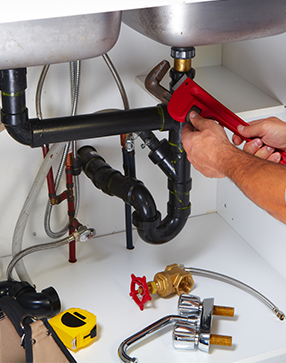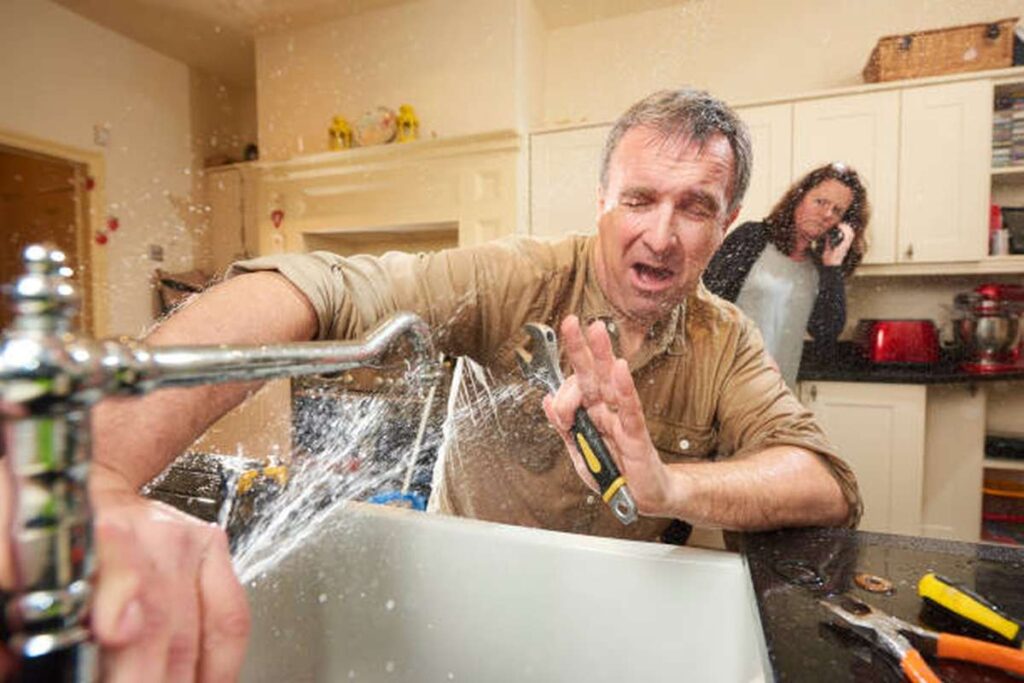Ways to Tackle Plumbing Problems in Your Rental Property
Ways to Tackle Plumbing Problems in Your Rental Property
Blog Article
What're your ideas regarding Plumbing Maintenance and Repair in your Rental Property?

Handling pipes issues in rental buildings efficiently is critical for maintaining occupant satisfaction and protecting the building's value. Whether you're a proprietor or a residential or commercial property supervisor, recognizing how to attend to these usual problems can save you money and time while making certain compliance with legal obligations. Below's a detailed guide on how to manage pipes concerns in rental buildings.
Document Everything
Keep in-depth documents of all reported pipes concerns and the actions taken to fix them. Paperwork must consist of days, summaries of the trouble, interaction with tenants, and receipts from professionals or plumbing technicians. This details can be critical for insurance coverage cases, tax obligation reductions, and lawful security.
Usage Qualified Professionals
Always utilize accredited and insured experts for considerable pipes repair services and setups. This makes sure that the job is up to code and can help prevent liability concerns in case of accidents or more damages. It also comforts renters that fixings are being managed professionally.
Develop Clear Communication
Motivate lessees to report any type of pipes issues as quickly as they occur. Supply multiple communication channels such as phone, e-mail, or a tenant website to make it very easy for them to reach out. Trigger responses to these records can avoid small issues from escalating into significant problems.
Inform Tenants
Inform your lessees about what makes up a pipes emergency and what does not. Supply standards on how to handle small problems themselves, such as utilizing a plunger to unblock a bathroom. Additionally, notify them about what they must prevent taking down drains to avoid obstructions, such as grease, coffee grounds, and non-biodegradable products.
Normal Upkeep
Implement a routine upkeep timetable for all pipes systems in your rental homes. Routine checks can aid recognize and deal with concerns like leakages, slow drains, or corroded pipes before they end up being significant. Take into consideration hiring a professional plumbing technician to check the buildings annually or semi-annually.
Quick Reaction to Emergencies
Have a plan in place for reacting to plumbing emergencies. This must include having the contact information of dependable plumbing services that provide 24/7 emergency repair work. Quick activity is necessary to decrease damage in situations like burst pipes or severe leaks.
Preventive Upgrades
Consider upgrading older pipes systems and components to a lot more contemporary, effective designs. This can decrease the regularity and intensity of plumbing issues and lower lasting upkeep prices. It's likewise a selling point for possible occupants who value upgrades and modern features.
Lessee Move-Out Inspections
Conduct detailed pipes checks during move-out inspections to ensure that any kind of problems are identified and addressed before a brand-new occupant moves in. This prevents disagreements with new tenants over pre-existing problems and makes sure the home is in leading condition.
Understand Legal Duties
Know your legal obligations concerning pipes and general residential or commercial property upkeep. A lot of jurisdictions need proprietors to ensure their properties are habitable which all plumbing systems remain in good working order. Failure to attend to serious concerns quickly can bring about legal actions from lessees.
Renter Repayments
If a plumbing concern requires prompt attention and the occupant resolves the problem on their own, have a clear policy in position for compensating costs. Make sure tenants understand they need to obtain previous authorization for higher-cost repair work unless it's an outright emergency.
Final thought
Taking care of plumbing problems in rental buildings requires a positive strategy and good communication with lessees. By staying on top of maintenance, responding without delay to emergencies, and utilizing qualified experts, proprietors can maintain their homes in excellent problem and maintain excellent relationships with lessees.
How to Handle Water Damage in a Rental Property
What is Water Damage?
Water damage is harm or destruction caused by water entering areas where it is not supposed to be. It can be caused by a variety of sources and can manifest in different ways. The most common examples of water damage include:
Leaking roof Plumbing leaks Appliance malfunctions Poor drainage Flooding Sewage backup Condensation Tenant negligence HVAC system issues Frozen pipes Is water damage dangerous?
Water damage itself is not inherently dangerous, but it can lead to various hazards and health risks if not promptly and properly addressed. The severity of these risks depends on the extent of the water damage, the source of the water, and how quickly it is mitigated.
Some potential dangers associated with water damage include structural damage, mold and bacterial growth, electrical hazards, water contamination, and pest infestations. In situations where mold and mildew have gone unaddressed, mold can start to develop within 24-48 hours of water exposure, and this can impose a serious health risk to tenants. In particular, mold spores and damp conditions can lead to respiratory issues and even make existing health problems worse, such as allergies, asthma, or immune disorders.
Water Damage in an Apartment - Who is Responsible?
If the water damage is caused by the tenant’s negligence, the tenant is responsible for the cost of repairs. If the water damage is caused by a defect in the property, the landlord is responsible for the cost of repairs. If the water damage is a result of natural causes, such as excessive rain, then the landlord is responsible, since the water intrusion likely occurred due to a defect in the property. Landlord Responsibility water damage in rental property
Since maintaining habitability is the landlord’s legal responsibility, landlords are responsible for any resulting structural damage caused by water damage. These structural damages may include damage to walls, roofs, ceilings, and flooring. If water damage has affected the rental property’s original structure, the landlord is responsible for repairing or replacing those materials. Therefore, landlords should have property insurance that covers the structural components of their rental property so that they can receive help with the costs of covered events.
Preventative measures can also help landlords avoid massive renovations. Preventative maintenance may include conducting regular inspections to identify and address potential water damage before it becomes a major and urgent problem.
If a landlord fails to meet their responsibilities regarding water damage, it can lead to legal disputes and potential liability. Tenants who believe their landlord is not addressing water damage issues in accordance with California law can seek legal advice or contact local housing authorities for assistance.
https://www.goodlifemgmt.com/blog/water-damage-in-a-rental-property/

I stumbled upon that piece about 10 Common Rental Property Repairs while browsing the web. Liked our write up? Please quickly share it. Let someone else check it out. Thanks so much for your time spent reading it.
Report this page